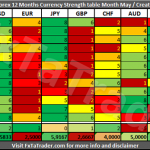It seems that the financial punditry, as well as many of their interviewees, are perplexed that the yield curve is flattening. At Bond Squad, we are not the slightest bit surprised. In the Bond Squad “2015 Outlook,” published 12/23/14, I opined:
“As the Fed raises short-term rates, the long end of the curve could begin pricing-in the effects of less accommodative Fed policy. This could result in a fairly flat yield curve at relatively low interest rates.”
This is precisely what has occurred since Fed liftoff has become more likely. Yesterday, media stories abounded that the yield curve was flattening because the Fed is expected to tighten gradually and modestly. In my opinion, this is not quite right. The curve is flattening because the Fed is poised to liftoff (which is considered anti-inflationary) at a time inflation is expected to remain fairly low. Thus, the yield curve is flattening via rising short-term rates and falling long-term rates.
That the yield curve is flattening in this way is not surprising, in itself, but I do not blame non-fixed income laypeople for being confounded. Usually, the curve flattens via short-term rates rising and long-term rates falling in the latter stages of a tightening cycle, not when the Fed lifts off. I believe the bond market is telling participants that, when it comes to the credit cycle, it might be later than you think. U.S. high yield defaults are rising and emerging market corporate defaults are at their highest level since 2009. I think we are in the early stages of the junk debt correction. When one considers that the Fed began tapering two years ago (which is a removal of stimulus, no matter how much some market participants attempt to deny it) and the expanding meltdown in the high yield credit markets, signs are there which augur for late cycle.
I believe that investors, pundits, advisors and even strategists have become too hung up on absolute numbers when they should be tracking trends. There is no law of economics which states that the neutral Fed Funds Rate must be 4.00% or that Consumer Confidence must move above, say, 110 to mark the peak of an economic cycle. Even technical strategists and analysts look for chart patterns rather than absolute numbers. Why is there a newfound affinity to relying on precise repeats/reversions of data? In my opinion because it relieves the need to be vigilant and (to some extent) responsible for portfolio management decisions.












Leave A Comment